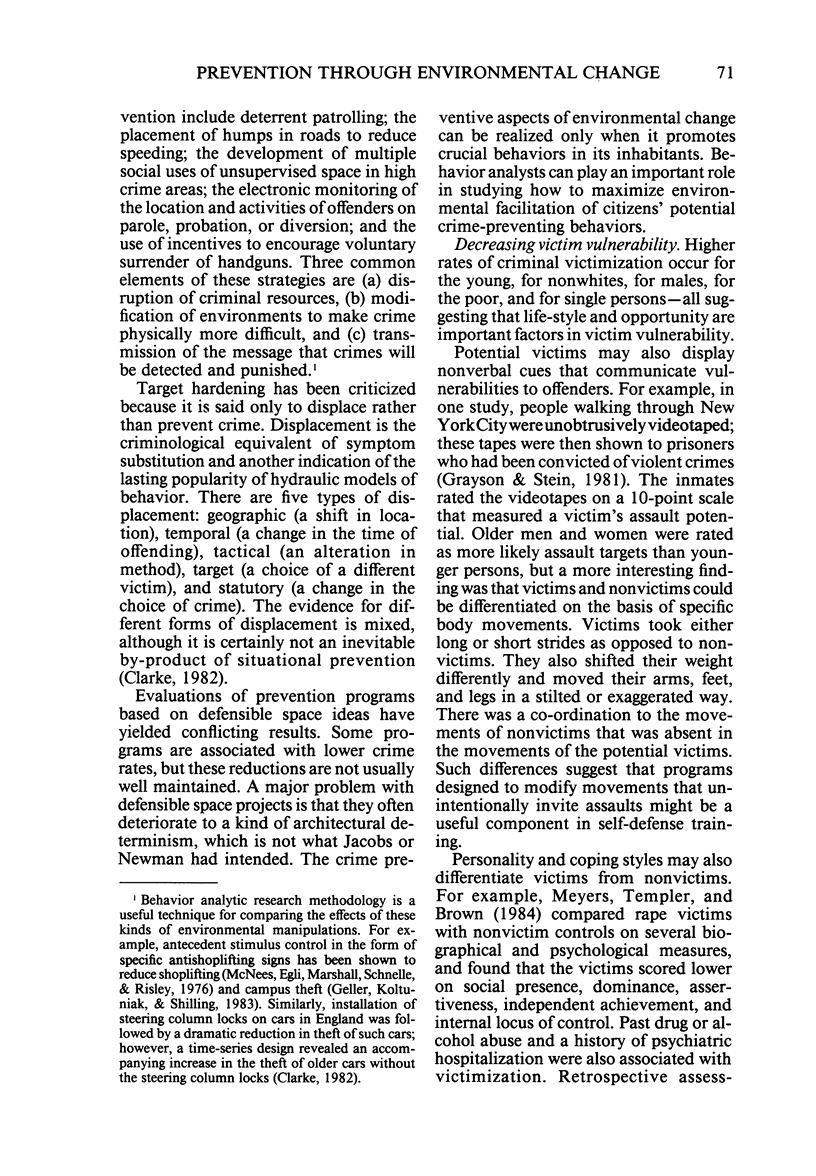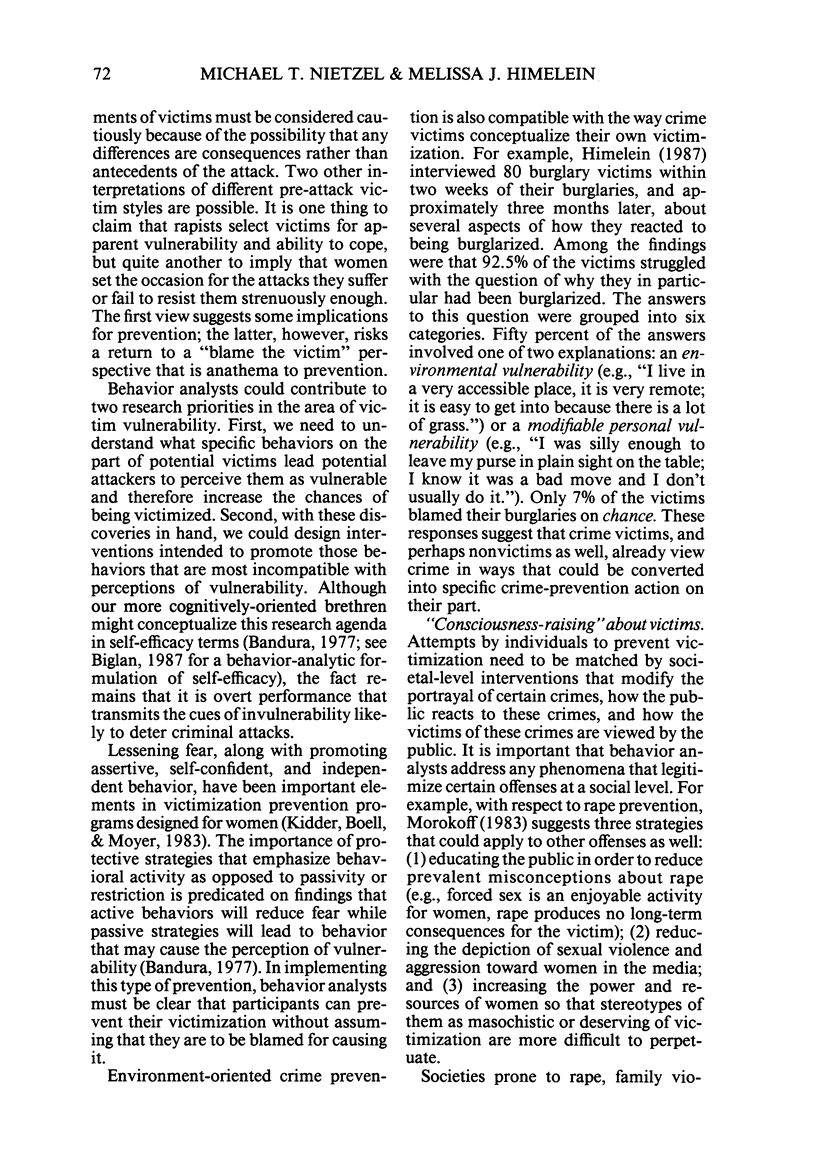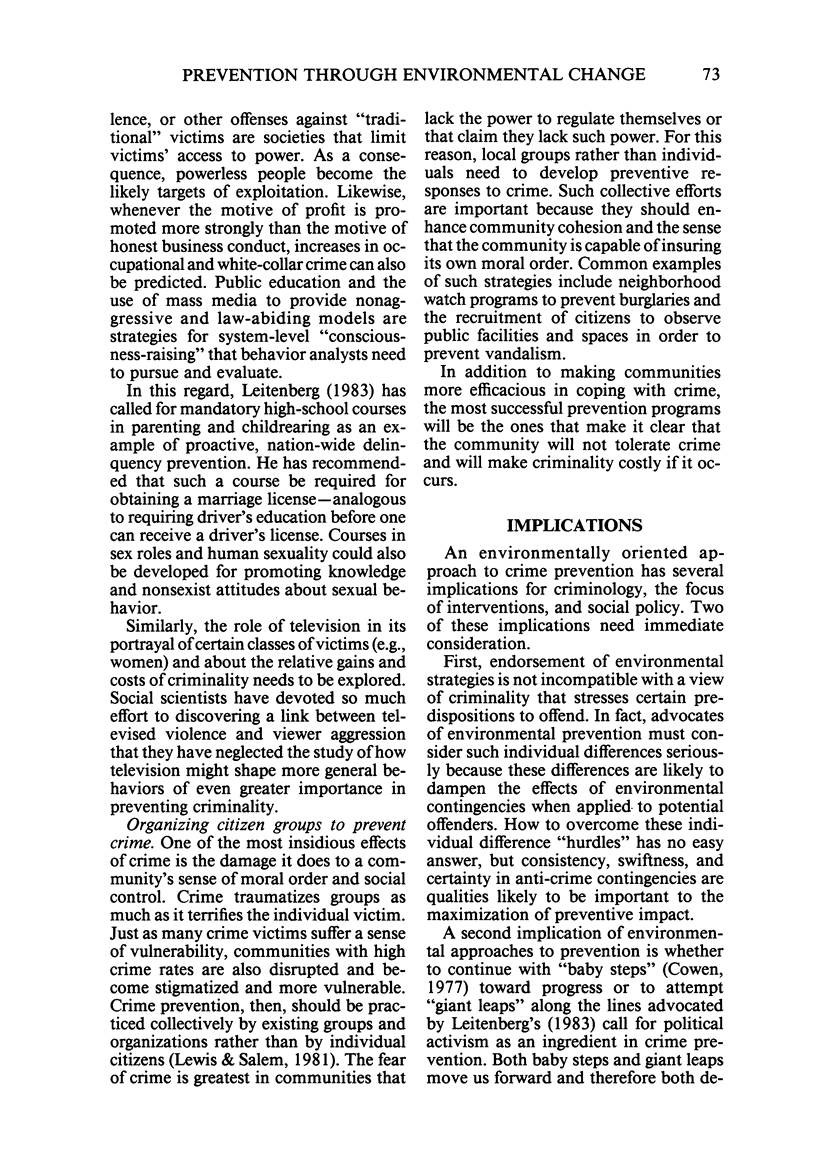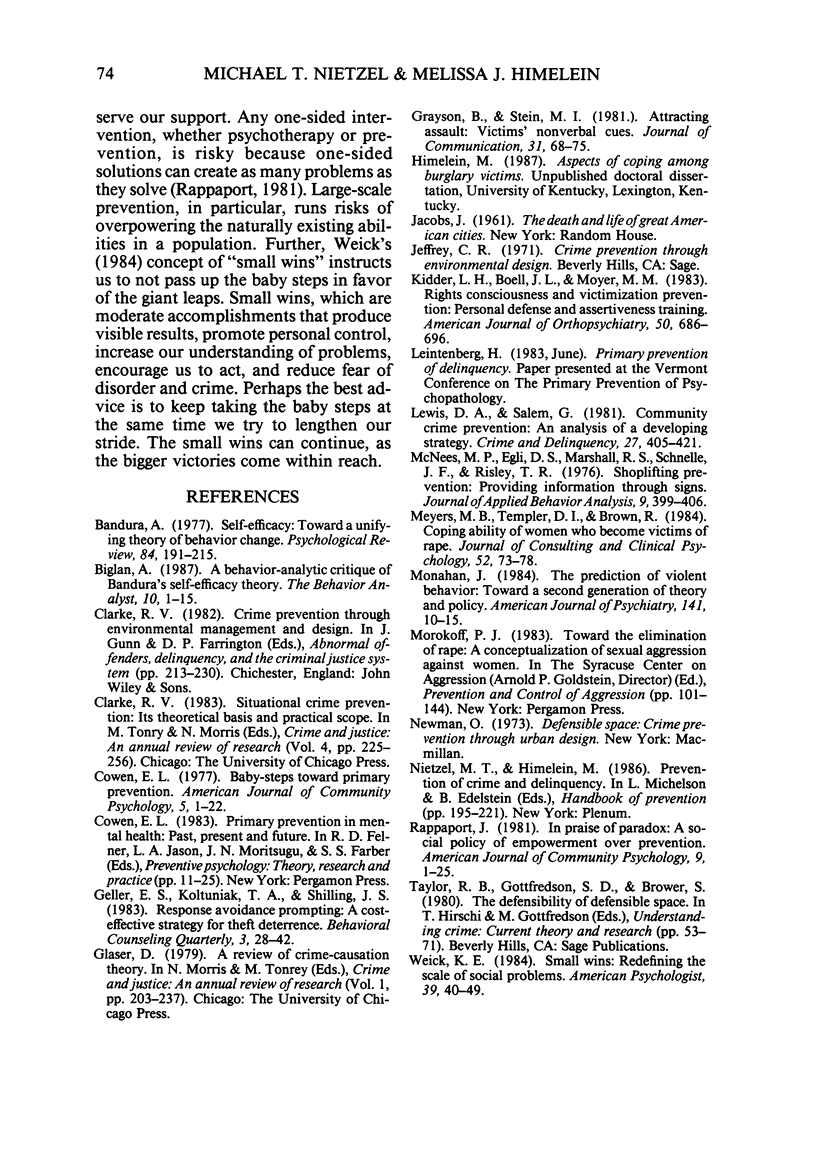Abstract
One approach to crime prevention where behavior analysts can make important contributions is the modification of environmental opportunities and victim vulnerabilities that are related to higher rates of offending. Examples of environmental crime prevention are discussed in the following areas: (1) modifying physical environments in order to “harden” targets of crime, (2) training victims to be less vulnerable to victimization, (3) eliminating portrayals of certain groups of people that legitimize their victimization, and (4) organizing neighborhoods and communities to strengthen their means of social control. Two implications of environmental crime prevention—the role of individual differences and the scope of prevention—are discussed.
Keywords: crime prevention, target hardening, victimization, community organization
Full text
PDF





Selected References
These references are in PubMed. This may not be the complete list of references from this article.
- Bandura A. Self-efficacy: toward a unifying theory of behavioral change. Psychol Rev. 1977 Mar;84(2):191–215. doi: 10.1037//0033-295x.84.2.191. [DOI] [PubMed] [Google Scholar]
- Biglan A. A behavior-analytic critique of Bandura's self-efficacy theory. Behav Anal. 1987 Spring;10(1):1–15. doi: 10.1007/BF03392402. [DOI] [PMC free article] [PubMed] [Google Scholar]
- Cowen E. L. Baby-steps toward primary prevention. Am J Community Psychol. 1977 Mar;5(1):1–22. doi: 10.1007/BF00884781. [DOI] [PubMed] [Google Scholar]
- Grayson B., Stein M. I. Attracting assault: victim's nonverbal cues. J Commun. 1981 Winter;31(1):68–75. doi: 10.1111/j.1460-2466.1981.tb01206.x. [DOI] [PubMed] [Google Scholar]
- McNees M. P., Egli D. S., Marshall R. S., Schnelle J. F., Risley T. R. Shoplifting prevention: providing information through signs. J Appl Behav Anal. 1976 WINTER;9(4):399–405. doi: 10.1901/jaba.1976.9-399. [DOI] [PMC free article] [PubMed] [Google Scholar]
- Monahan J. The prediction of violent behavior: toward a second generation of theory and policy. Am J Psychiatry. 1984 Jan;141(1):10–15. doi: 10.1176/ajp.141.1.10. [DOI] [PubMed] [Google Scholar]
- Rappaport J. In praise of paradox: a social policy of empowerment over prevention. Am J Community Psychol. 1981 Feb;9(1):1–25. doi: 10.1007/BF00896357. [DOI] [PubMed] [Google Scholar]


